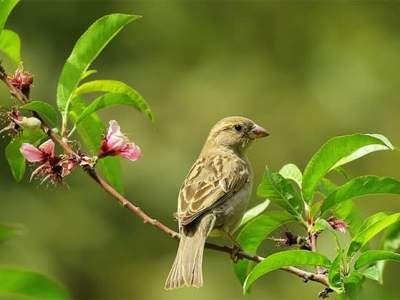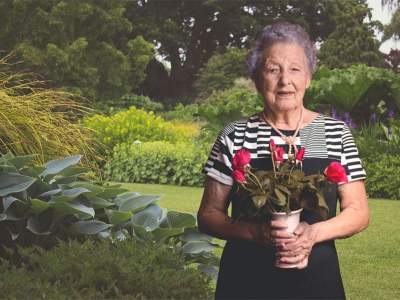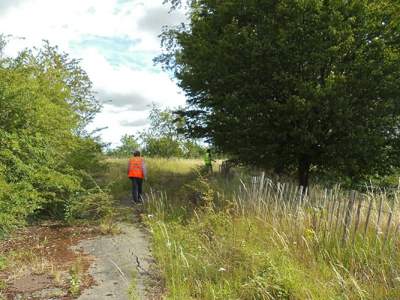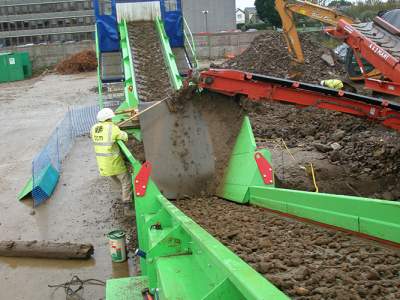
Liverpool residential property case study
If you’re a keen nature-lover like our client Janet, read on the learn how Japanese knotweed harms other species.

Japanese knotweed changes dramatically in appearance throughout the year, and since it is such an invasive plant, identifying an infestation in your garden or on commercial land is the essential to ensure that it doesn't turn into something uncontrollable, and costly. Here's how to identify Japanese knotweed throughout its growing cycle, starting in springtime.
In March and April, new shoots of Japanese Knotweed will begin to emerge. These shoots will look rather like asparagus and may have a red or purple tone. The green leaves and stem will unfurl as Spring progresses, sprouting up from the crown material which becomes established on the surface of the ground. The rhizome, the buried part of the plant, can extend up to three metres deep and lie dormant for many years.

The red leaves of new shoots sprouting from tarmac.

As the plant grows it changes from red to green.

Japanese knotweed will find any crevice to emerge from.

Early growth of Japanese knotweed looking very similar to asparagus tips!
As the year progresses Japanese Knotweed will start to grow rapidly in its quest for light and water. The bamboo like green stems are hollow and are speckled red or purple with red joints and knots, and can grow to over 3m in height, reaching its mature height by June. The leaves will be a lush green, shaped like a heart or a shield and can grow up to 22cm in length. The ends of the cane develop a distinctive zigzag growth appearance.

Japanese knotweed growing in a residential garden, and looking very much like it is on its way to invade a neighbours garden - causing problems for both homeowners.

Close-up of heart or shield shaped Japanese knotweed leaves, with red joints and knots.

Growing out of a building, here you can clearly see the speckled canes of the Japanese knotweed plant.

A Japanese knotweed infestation can take over the smallest garden or plot, whether it is located in deep countryside or on a busy London street.
In late Summer, Japanese Knotweed develops clusters of spiky stems covered with tiny white, creamy coloured flowers, bourn towards the end of the zig zag cane. The plant will produce non-viable seeds.

From the tiniest sprout in early spring, Japanese knotweed will cause devastation within just a few months.

Growing anywhere and everywhere, no location is safe from this unwanted land invader.

In late summer the thick green foliage and creamy coloured flowers will overwhelm any location it is found, whether on commercial or residential land.

Close-up of Japanese knotweed plant in bloom. Some may say it is a beautiful plant, and when grown in its natural habitat, it would be the predator that it is.
In late Autumn, the leaves will fall and the canes will brown. Once the first frosts have hit, Japanese Knotweed may look like a pile of dead brown stems, again with the typical zig zag growth pattern at the end of the cane. But don't be fooled, the plant is not dead, it is storing energy deep in the rhizome ready to repeat the process again the next year.

Autumn Japanese knotweed leaves dying-back after causing another year of havoc.

Now in winter the knotweed canes are devoid of leaves.

The rhizmone can lie dormant underground for years, so removal is the best option to stop regrowth and property damage.

The longer Japanese knotweed goes untreated, the worse the final outcome will be, as can be seen in this picture.

Howard Downer, AKA Dr. Knotweed, has over 20 years of experience as an Environmental Consultant and is regarded by his peers as one of the most knowledgeable people in the Japanese knotweed industry.
Follow Dr. Knotweed to hear about the latest developments regarding Japanese knotweed and the implications of infestation.

If you’re a keen nature-lover like our client Janet, read on the learn how Japanese knotweed harms other species.

Mortgage lenders are reluctant to invest in land and property compromised by Japanese knotweed.

TCM had a lot to get done in a single week. The blessing was that no Japanese knotweed was found on the development site!

St Albans in Hertfordshire is a Japanese knotweed hotspot, so TCM were called to the development site to eradicate the plant once and for all.